I started working on this project sometime at the end of 2013 and slowly throughout most this past year when time allowed, when I first heard that Perry Miniatures were going to produce this range I began researching the various duchies and minor nations. I hope the range will eventually include cavalry and artillery. COTR Flags are hard to find, GMB Designs have some and Body's Banners via Redoubt Enterprises.
1806-1813
The Confederation of the Rhine was formed in 1806 when 16 German minor states decided to throw their nations' futures in with Napoleon Bonaparte and ally themselves with France. A further 19 joined later.
The more than 15 million people living within the Confederation provided both a physical barrier against enemies on France's eastern borders and also sent large contingents of troops to join its armies. The members of the Confederation included large kingdoms and duchies, together with smaller principalities and city states.The key ones were Bavaria (3.5 million subjects), Saxony (2 million), Westphalia (2 million), Wurttemburg (1.5 million) Baden (1 million) and the Duchy of Warsaw (4 million).
The others were Cleve-Berg, Hesse-Darmstadt, Anhalt-Bernburg, Anhalt-Dessau, Anhalt-Kothen, Hohenzollern-Hechingen, Hohernzoller-Sigmaringen, Isenburg, Leyen, Leichtenstein, Mecklinburg-Schwerin, Mecklenburg-Strelitz, Ebersdorf, Gera, Gtreiz, Lobenstein, Schleiz, Saxe-Coburg-Saalfield, Saxe-Gotha-Altenburg, Saxe-Hildburghausen, Saxe-Meningen, Saxe-Weimar, Schaumburg-Lippe, Schwarburg-Rudolstadt, Schwarzburg-Sonderhausen, Waldeck, Wurzburg, Erfurt and Frankfurt.
Disaffection within the group over continued support for France began after Bonaparte's invasion of Russia and the Allied victory at Leipzig saw many of the confederation switch sides to help the Allies during the 1813 War of German Liberation.
1st Battalion 4th Rheinbund (Saxon Duchies) Regiment
The Duchies of Saxe-Gotha-Altenburg and Saxe-Meiningen entered the Confederation of the Rhine in December 1806 together with the other Duchies located in the Thuringia region. These were the Duchies of Saxe-Coburg-Gotha, Saxe-Hildburghausen, Saxe-Weimar and Saxe-Hildburghausen. All these small states had to reenforce their weak military forces and had to raise the "Regiment of the Dukes of Saxony", later renamed the "4th Regiment of the Confederation of the Rhine". Despite the various origins of the units, the regiment was always kept together. The commanding officer was Colonel von Egloffstein from Weimar. The regiment was organized as follows:
1st and 2nd Battalions:
- 1 Company Grenadiers Gotha
- 3 Companies Fusiliers Gotha
- 1 Company Fusiliers Meiningen
- 1 Company Voltigeurs Coburg
3rd Battalion:
- 1 Company Carabiniers Weimar
- 4 Companies Chasseurs Weimar
- 1 Company Chasseurs Hilburghausen
Without the Coburg contingent, the regiment saw action at the siege of Kolberg in 1807. In the war against Austrian in 1809 it fought against the Tyrolian rebels. On August 4th 1809, the regiment was engaged in severe fight near the village of Oberau at the River Eisack in Ttrolia. The regiment's casualties were nearly 1000 men. Beginning 1810, the regiment went to Spain. Shortly after their arrival in Spain, the regiment was brigaded with the 1st Nassau Infantry Regiment and was ordered to the village of Manresa. There it was attacked, overpowered and forced to retire to Barcelona. The 4th Regiment of the Confederation of the Rhine lost 12 Officers and 350 Men. After this incident the regiment was garrisoned in Gerona and was finally ordered home in January 1811. For the Russian campaign of 1812, the unit was reorganized and filled to its full strength of about 2800 men. The regiment marched east from the Prussian City of Konigsberg on November 8th 1812 and reached Wilna on November 23rd. There it met the debris of the French army retreating out of Russia. In fighting during the retreat, the regiment was nearly destroyed. Its remains reached Danzig on January 14th 1813.

Duchies of Anhalt Infantry Battalion 1809-1813
The three Anhalt territories, Anhalt-Dessau, Anhalt-Koethen and Anhalt-Bernbund, were awarded the title of Duchies in 1807. That was the year that their sovereigns entered the Rhinebund, a union of German States under the dominance of Napoleon. Consequently, they had to raise a five company battalion of infantry to serve in Napoleons Army. Two companies were provided by Dessau, two by Koethen and one by Bernburg. The Battalion saw its first action during the 1809 fighting in Tyrolia. Also in 1809, the battalion was combined with the Lippe Infantry Battalion to make up the 5th Rhinebund Regiment. At this time the battalion adopted the French structure of four Fusilier Companies, one Grenadier Company and one Voltigeur Company.
The 5th Rhinebund Regiment was sent to the Spanish theater of war where it was engaged from1809 until 1811. In 1811 a small surviving core of the Anhalt Battalion returned home where the Battalion was reformed. It was again combined with the Lippe Infantry Battalion to make up the 5th Rhinebund Regiment. The Regiment took part in the end of the Russian Campaign of 1812 when it met the returning debris of Napoleons Army as it fled Russia. At the beginning of 1813, the Battalion entered the City of Danzig where it became part of the garrison. Danzig was besieged by the Allied forces shortly after. The soldiers from Anhalt left Danzig on November 30th 1813. By this time, another newly raised Anhalt Battalion was already fighting on the Allied side against the French.
Duchies of Saxe-Weimar & Saxe-Hildburghausen 1805-1813
The Duchy of Saxe-Weimar entered the Confederation of the Rhine in December 1806 together with the other Duchies located in the Thuringia region. These were the Duchies of Saxe-Gotha-Altenburg, Saxe-Meniningen, Saxe-Coburg-Gotha, Saxe-Hildburghausen. At this time onlt Weimar possessed a battle tested military force. The Weimar Sharpshooter Battalion fought in the the Revolutionary Wars of 1796 and was a Prussian ally in the War of 1806. In 1807 the battalion was organized as a five company battalion of light infantry ( 1 Carabinier and 4 Chasseur companies). Together with one company from Hildburghausen they formed the 3rd light battlaion of the newly raised Regiment of the Saxon Duchies. The 1st and 2nd battalion was provided by the other Duchies. The regiment was later renamed the 4th Regiment of the Confederation of the rhine. Despite the various origins of the units, the regiment was always kept together. The commanding officer was Colonel von Egloffstein from Weimar. The regiment was organized as follows:
1st & 2nd battalion
- 1 company grenadiers (Gotha)
- 3 companies fusiliers (Gotha)
- 1 company fusiliers (Maniningen)
- 1 company voltigeurs (coburg)
3rd battalion
- 1 company carabiniers (Weimar)
- 4 companies chasseurs (Weimar)
- 1 company chasseurs (Hildburghausen)
Without the Coburg contingent, the regiment saw action at the siege of Kolberg in 1807. In the war against Austria in 1809 it fought against the Tyrolian rebels. On August 4th, 1809 the regiment was engaged in a severe fight near the village of Oberau at the river Eisackin in Tyrolia. The regiments casualties were nearly 1000 men (Weimar lost 15 officers and 406 men). Begining 1810, the regiment was sent to Spain. Shortly after their arrival in Spain, the regiment was brigaded with the 1st Nassau Infantry regiment and was ordered to attack the village of Manresa. There it was attacked and overpowered and forced to retire to Barcelona. The 4th Regiment of the Confederation of the Rhine lost 12 officers and 350 men. Afther this incident the regiment was garrisoned in Genoa and was finally ordered home in January 1811. For the Russian campaign of 1812, the regiment was reorganized and filled to its full strength of about 2800 men. The regiment marched east from the Prussian City of Konigsberg on November 8th 1812 and reached Wilna on November 23rd. There it met the debris of the french army retreating out of Russia. In fighting during the retreat, the regiment was nearly lost. Its remains reached Danzig on January 14th 1813.
Principalities of Lippe Fusilier Battalion 1807-1809
On the 8th of May 1808 the two Lippe Principalities of Lippe-Detmold and Schaumburg-Lippe entered the Confederation of the Rhine. In the same year a Fusilier Battalion of 5 Companies was raised. Each Company had a strength of 128 men. It was led by Lieutentant-Colonel V.Campe. Three companies were made up by Lippe-Detmold and one Company by Schaumburg.Another Company was mixed of men from both Principalities.The unit was sent to the City of Hamelin where it was trained and equipped with French Muskets. In November 1808, the Schaumburg Company and one of the Detmold Companies were ordered to march towards Spain.On December 6th, they reached the French City of Metz.There they were united with the Companies of Reuss and of Waldeck and two Companies from Schwarzburg. These units of small German Principalities formed the "Batallion des Princes".On the 14th of April, the Battalion reached the Spanish border.It was engaged in escort and garrison duties and in fighting against Spanish guerillas.On the 31st of December 1808 only a third of the original contingent still survived.The part of the Lippe Battalion that had remained at home was enlarged to form 4 Companies.Each Company now had a strength of 140 men.There were three Companies of Lippe-Detmold and one of Schaumburg-Lippe.In June 1809 the Lippe contingent was combined with the Anhalt-Battalion to form the 5th Rhinebund Regiment.The Lippe Battalion became the 2nd Battalion of the new regiment.Afther a short engagement against the Austrians in 1809, the 5th RhinebundRegimnet wassent to Spain.It arrived there in March 1810.
In June 1810 the survivors of the two Lippe Companies of the Batallion des Princes were absorbed by the Lippe Battalion.Because of the terrible conditions in the Spanish theater of war the strength of the unit diminished quickly.In September 1810 a raid of British and Spanish troops against the Village of LaBispal made a large part of the Lippe Battalion prisoners of war.The remaining soldiers were gathered in two Companies, one Company Detmold and one Company mixed Detmold and Schaumburg.The decimated Battalion was finally ordered home in January 1811.The unit was rebuilt and prepared for the upcoming Russian Campaign.
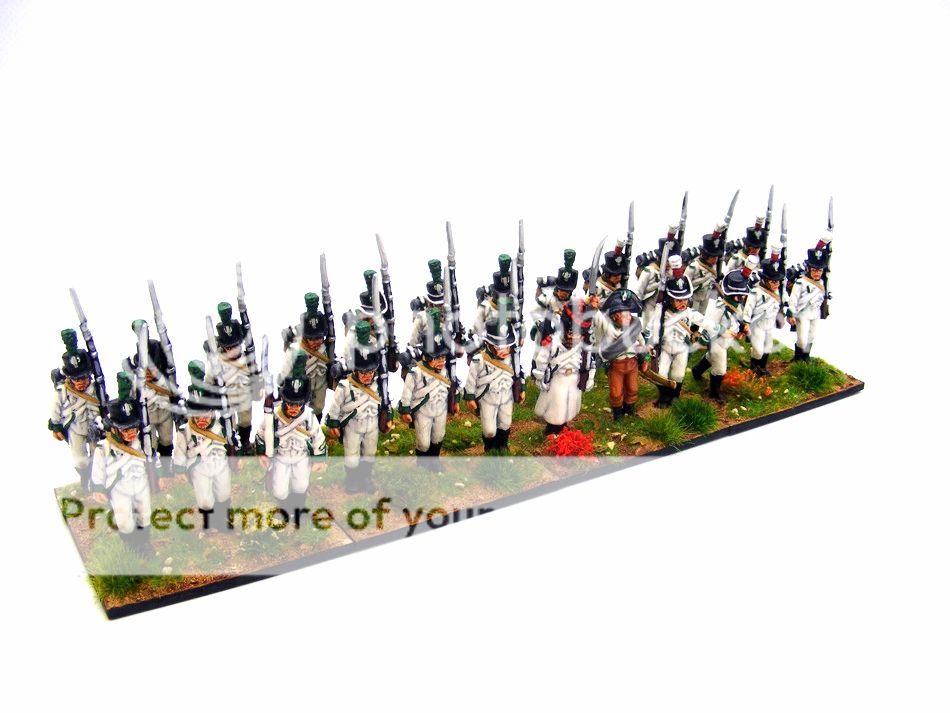
Principalities of Lippe Fusilier Battalion 1809-1813
Grand-Duchy of Wurzburg Infantry 1806-1812
In 1803the Bishopric of Wurzburg was dissolved and its territory incorporated into the Electorate of Bavaria.Three years later. in 1806 Wurzburg was restored as an independent state again.Its new status was Grand Duchy. Ferdinand the former Duke of Tuscany became the new Grand duke.He was a brother of the Kaiser in Vienna.At the beginning of his rule, he entered the Confederation of the Rhine.At the same time he began to raise a new Wurzburg military force.It consisted of a light chevauleger regiment,an infantry regiment and a small artillery detachment.The makeup of the infantry regiment was comprised of conscripts and formaer Wurzburg soldiers who returned from the 12th Bavarian Infantry regiment (Regiment Lowenstein) and the 5th Bavarian Light Infantry Battalion. The two battalions of the regiment had one grenadier, one voltigeur, and four fusilier companies each.In 1809 the regiment was ordered to Spain.Upon its arrival,it immediately saw action at the siege of Catalonian town of Gerona.The regiment suffered enormous casualties there.The original strength of about 1500 men was reduced to 649 men by the end of the action in 1809.The two Battalions were combined into a single one and they remained in Spain until the end of the war in 1814.
At home in Wurzburg, three new battalions were raised in the beginning of 1812 for the Russian Campaign.Together wuth the battalion in Spain,they formed the new Wurzburg Infantry Regiment.The battalion remianing in Spain was still the 1st Battalion of the regiment.The three new ones were incorporated into the Austrian Auxiliary Corps and took part in the Russian Campaign under the command of Schwarzenberg.In 1813 they were engaged at the Battles of Gross-Beeren, Dennewitz and Leipiz. The allies occupied Wurzburg in October 1813 and the Wurzburg troops ended their military action at that time.In 1813 the Grand duchy of Wurzburg again became part of the Kingdom of Bavaria.The remains of the Wurzburg infantry were incorporated into the newly raised 12th Bavarian Infantry Regmient.



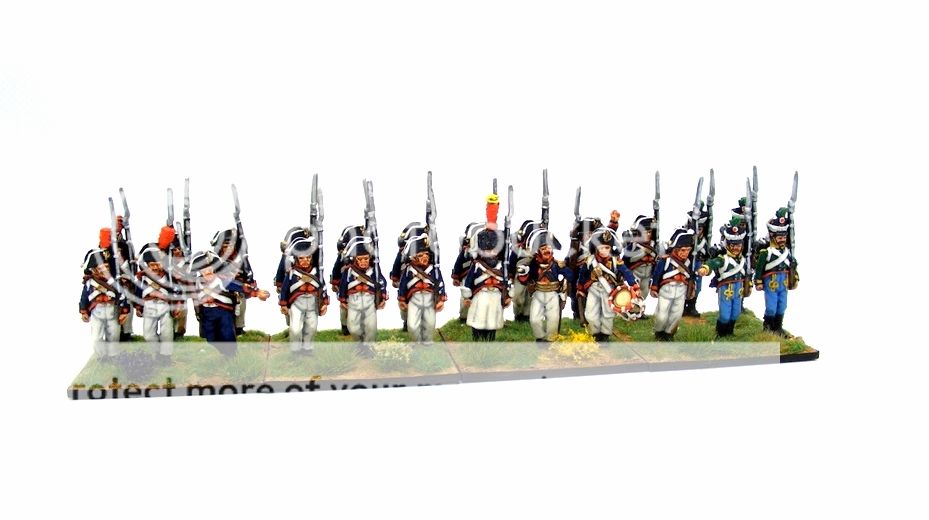

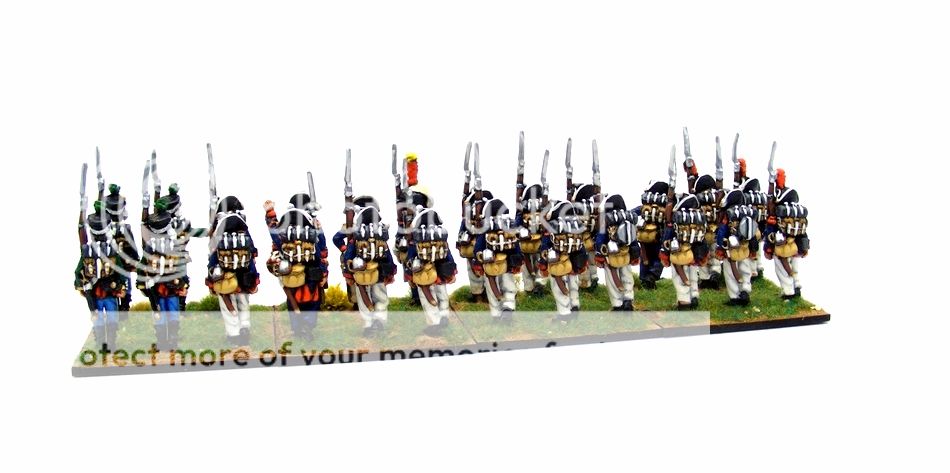
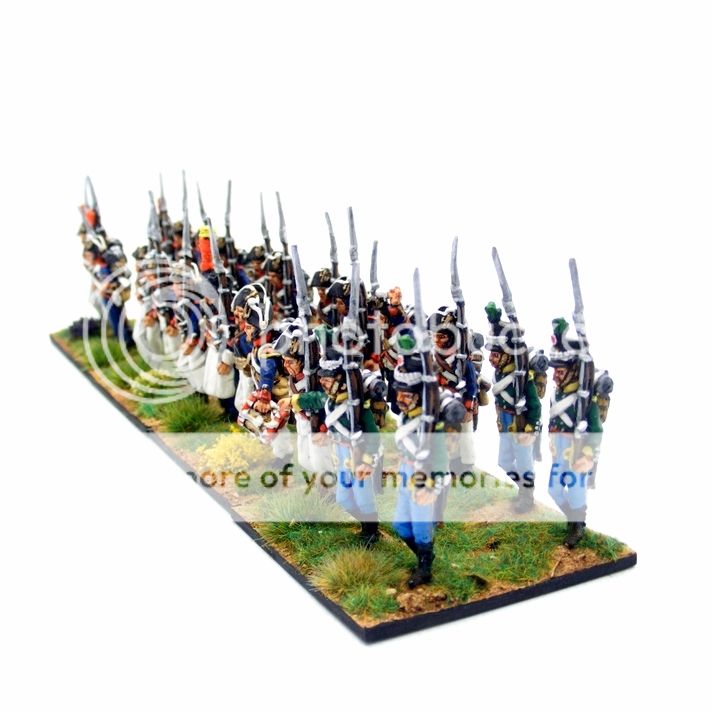
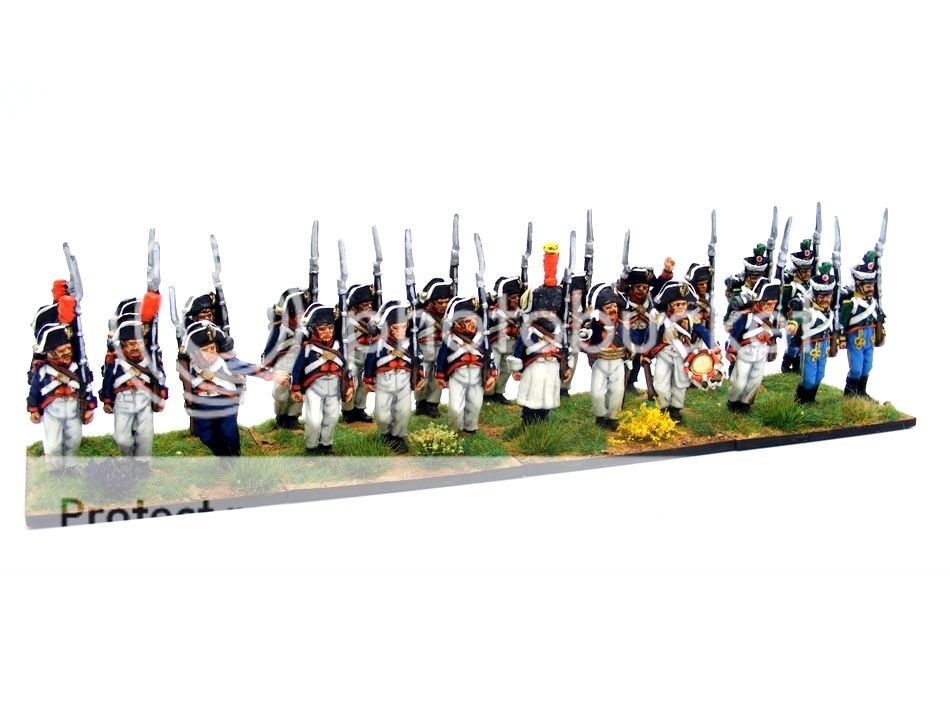
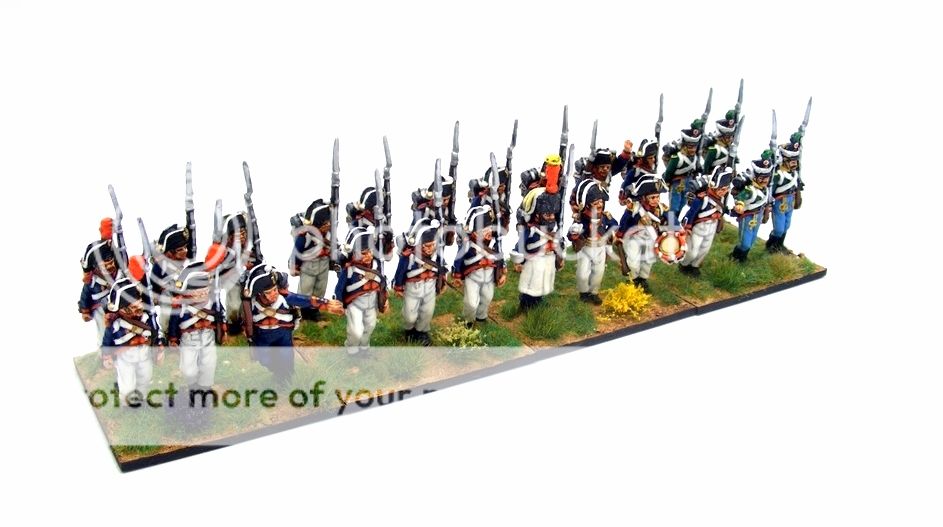


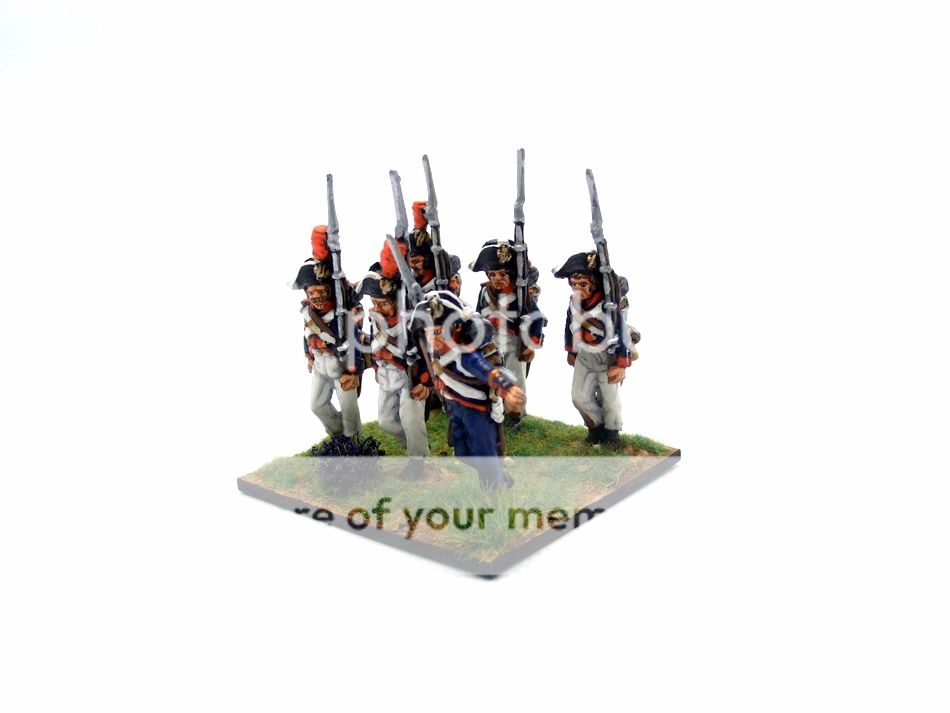



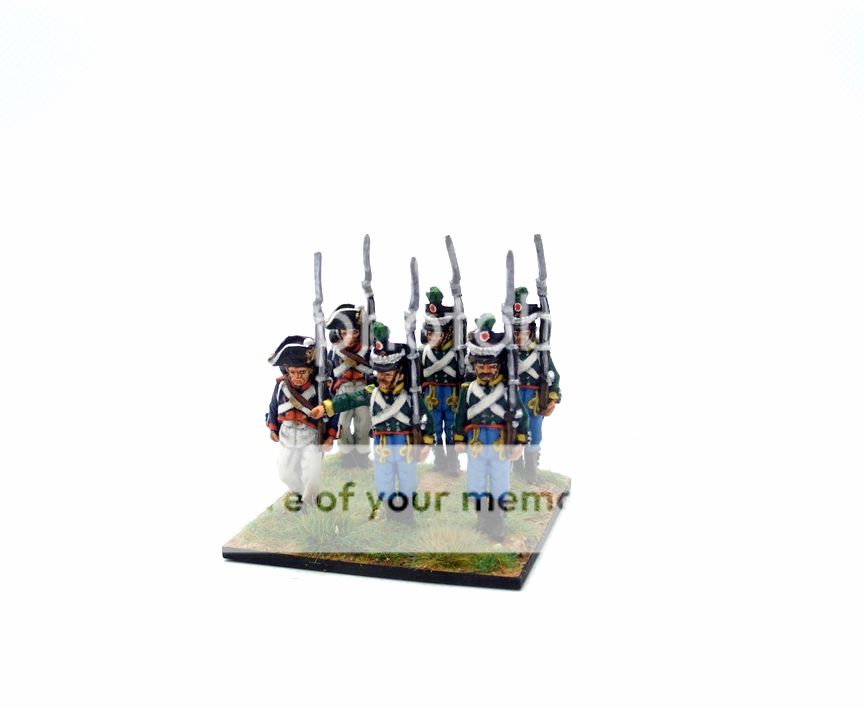
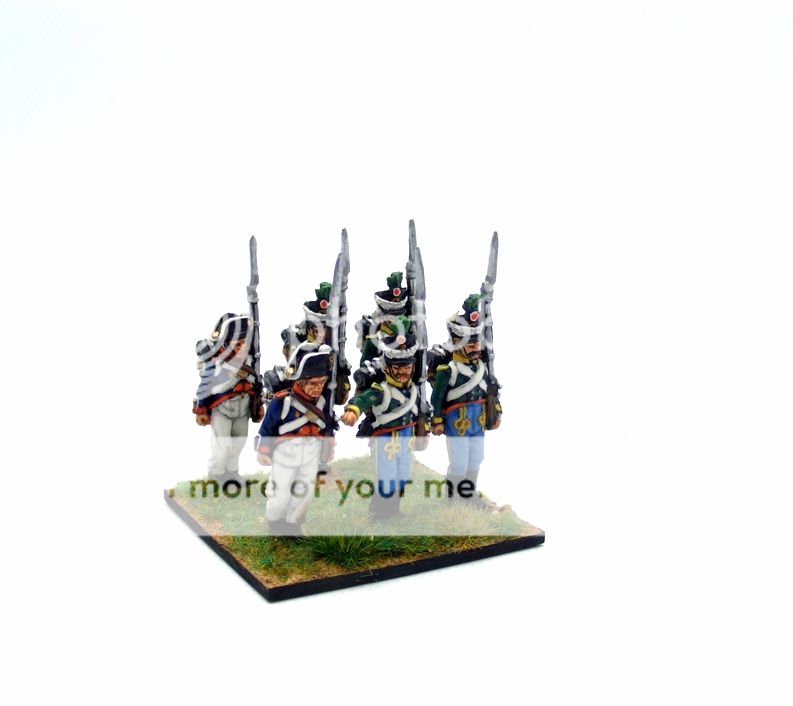
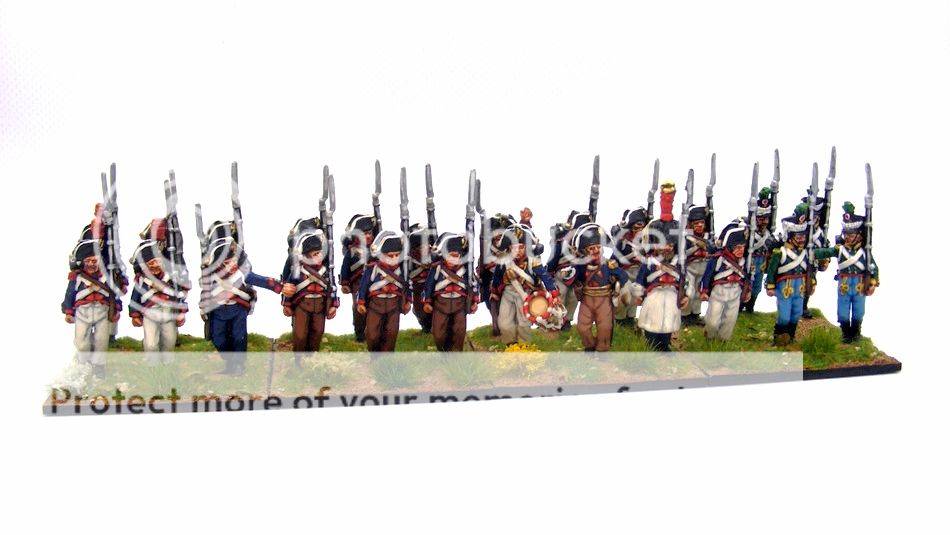

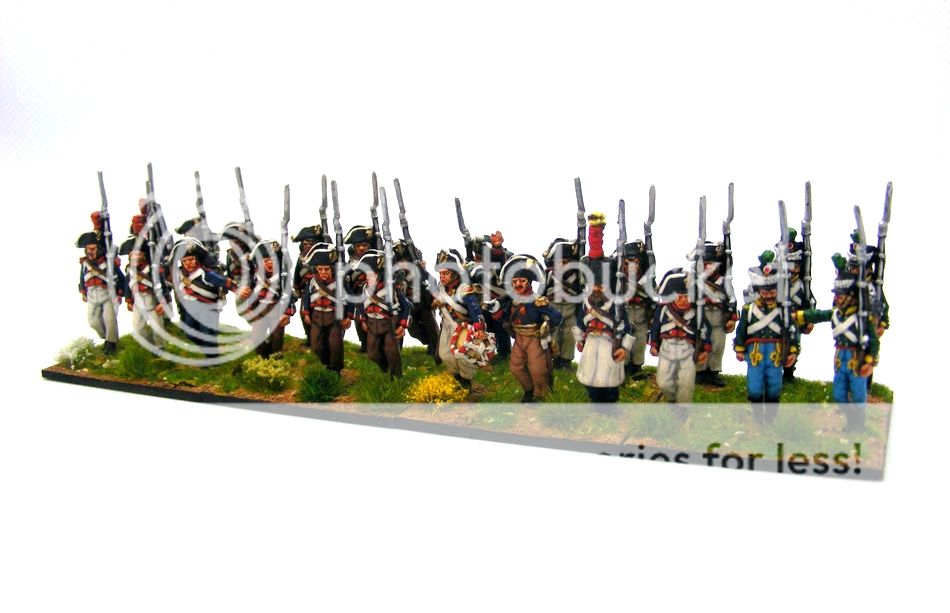











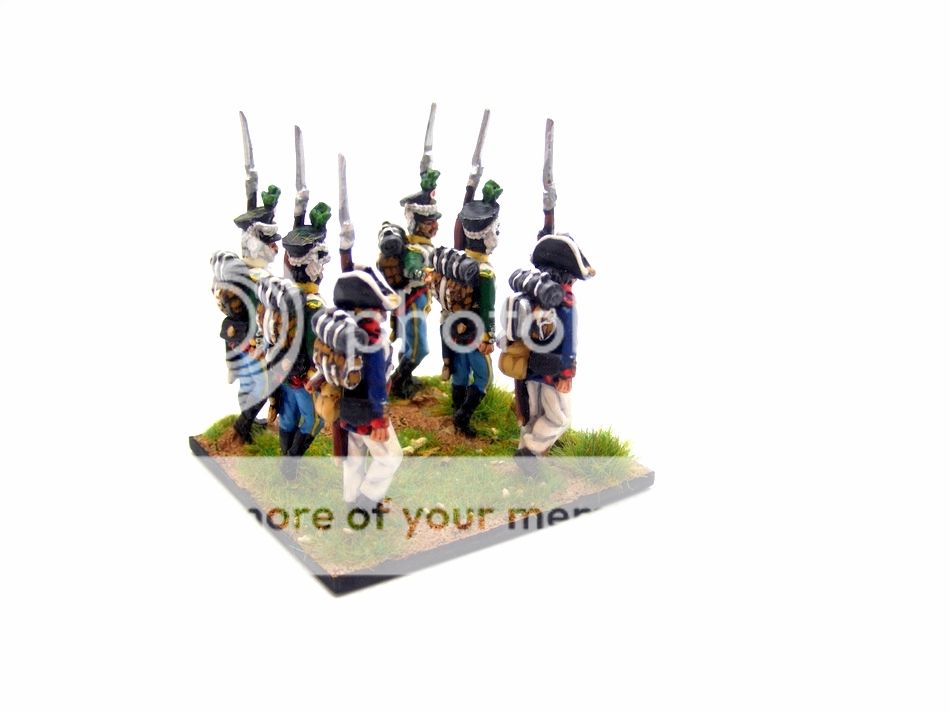

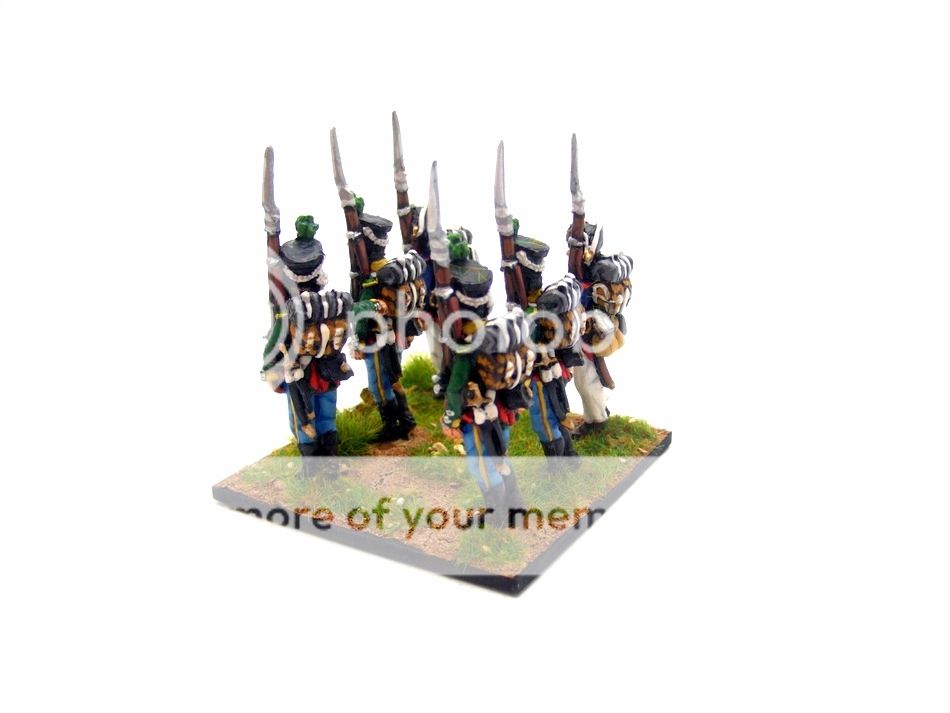
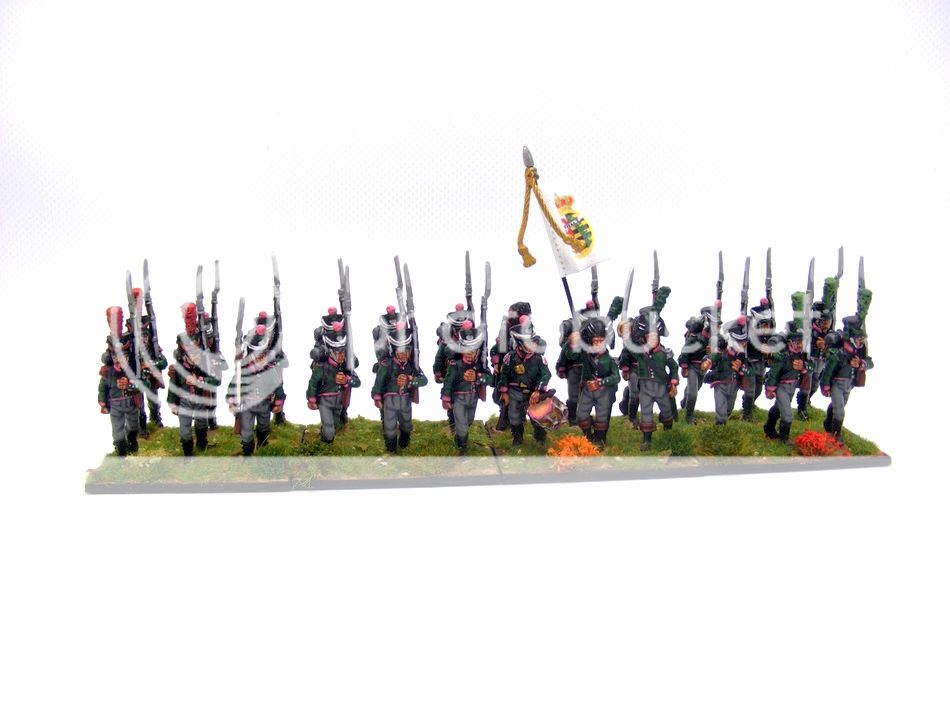
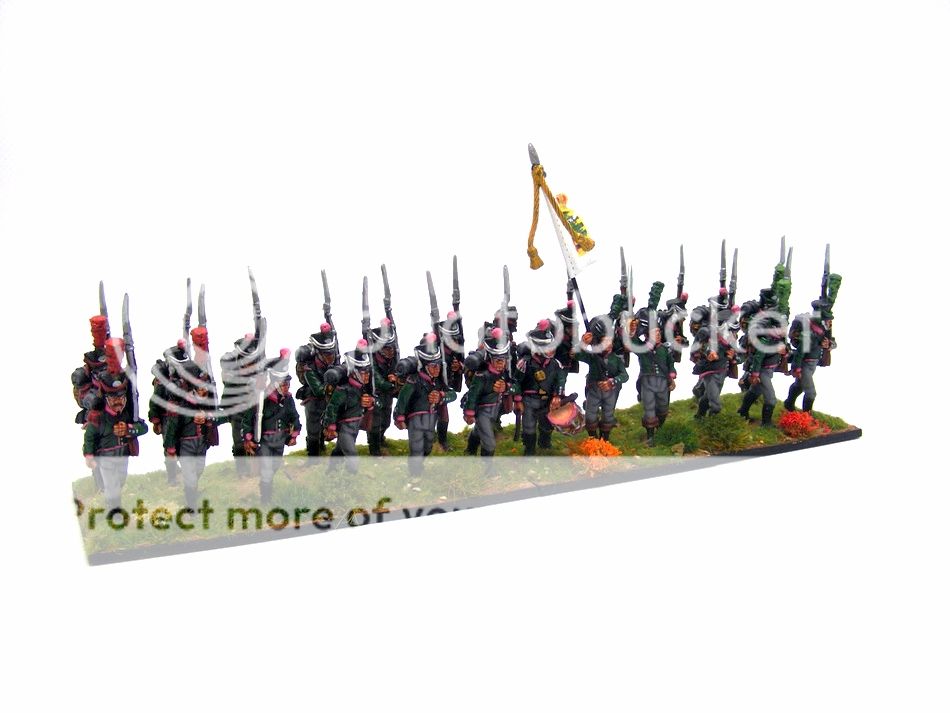
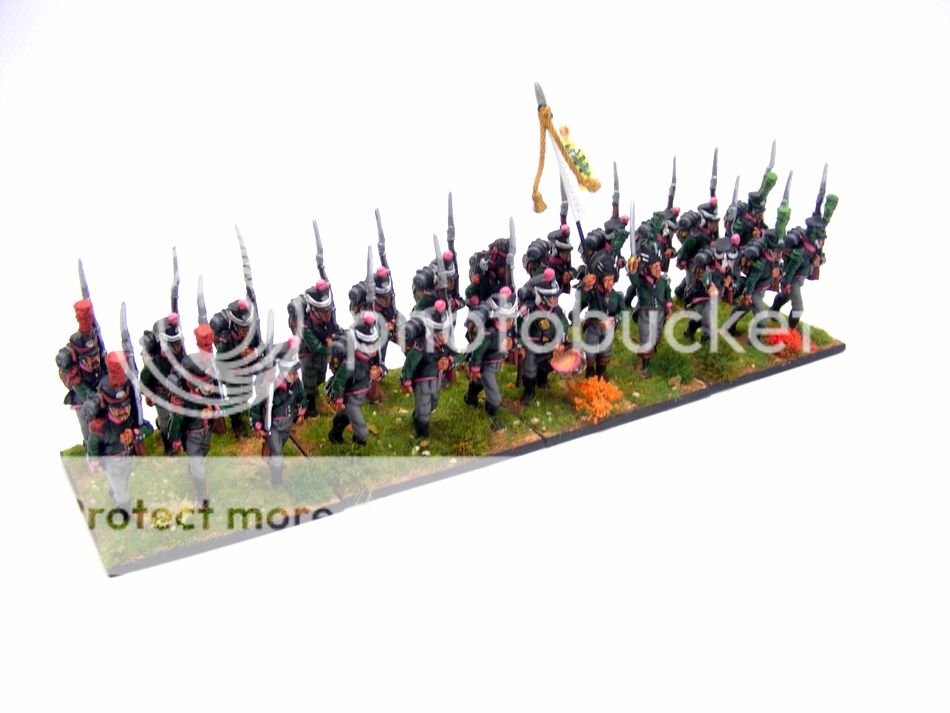
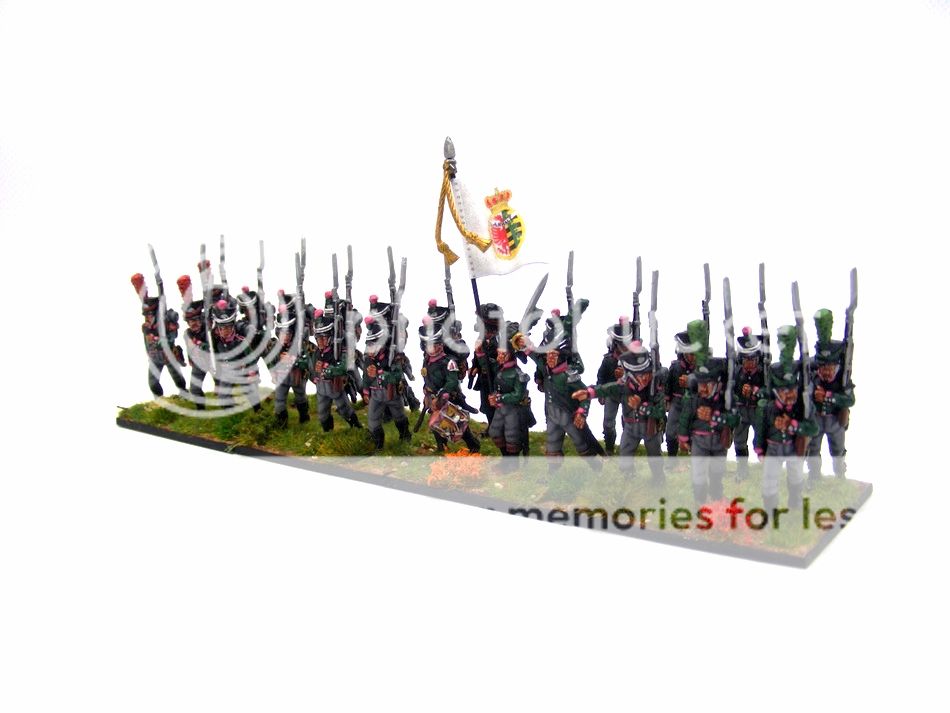
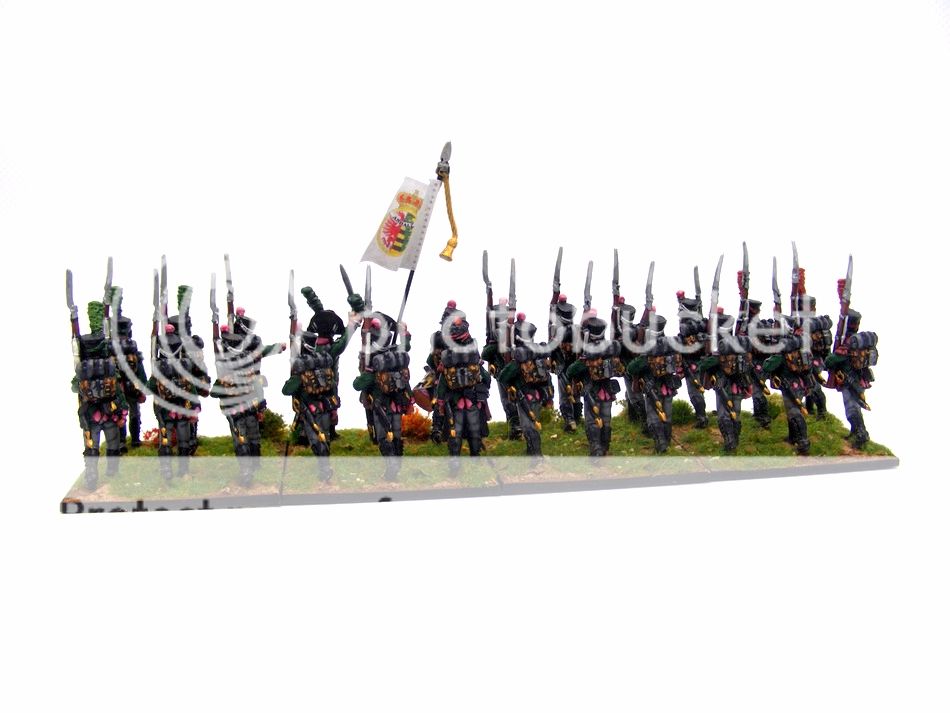









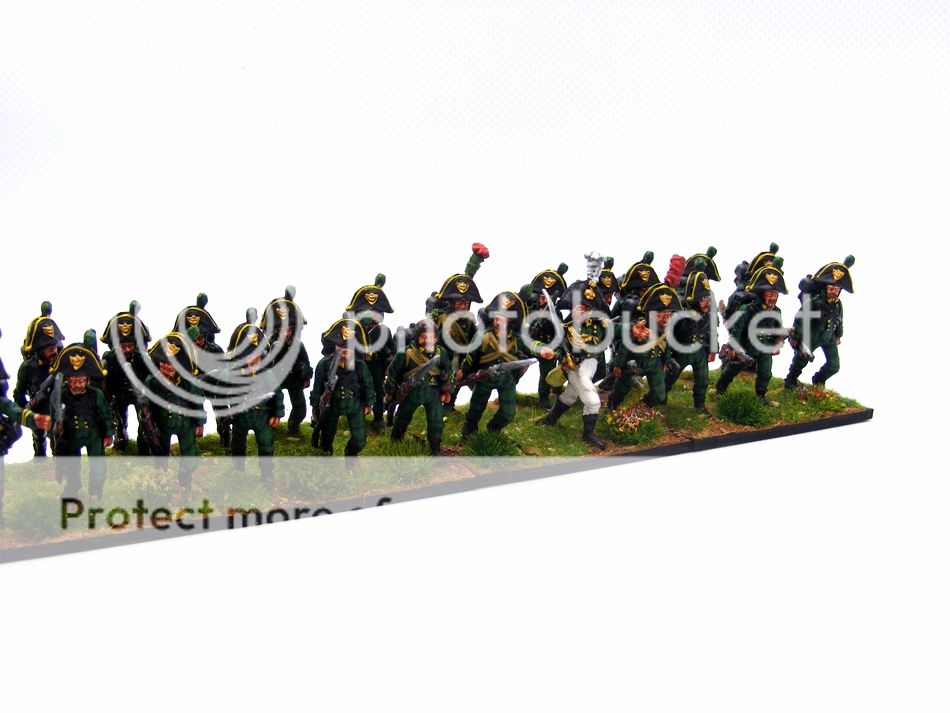
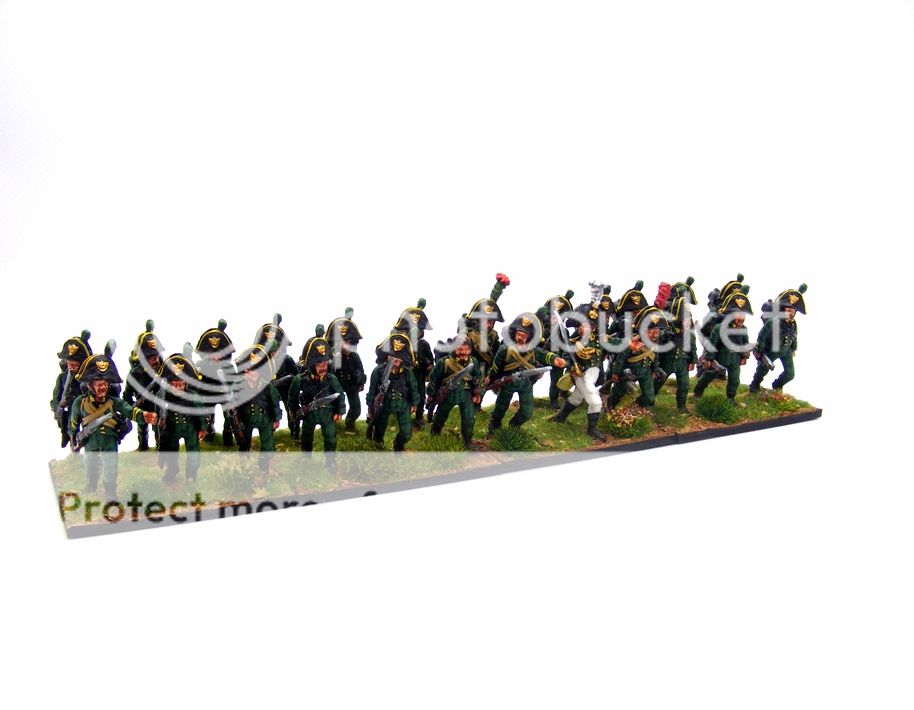
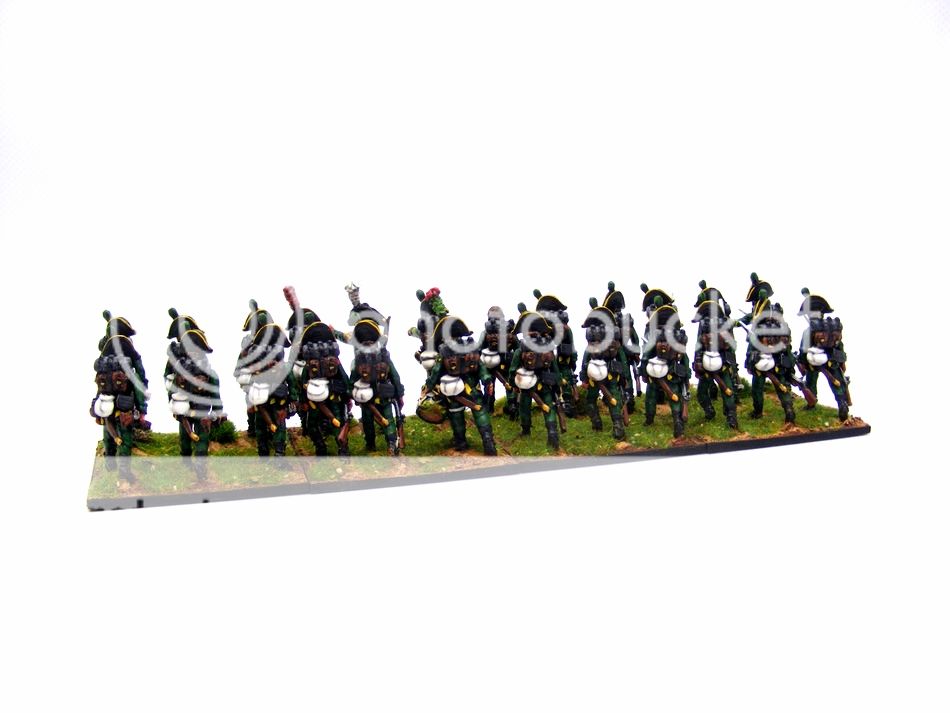
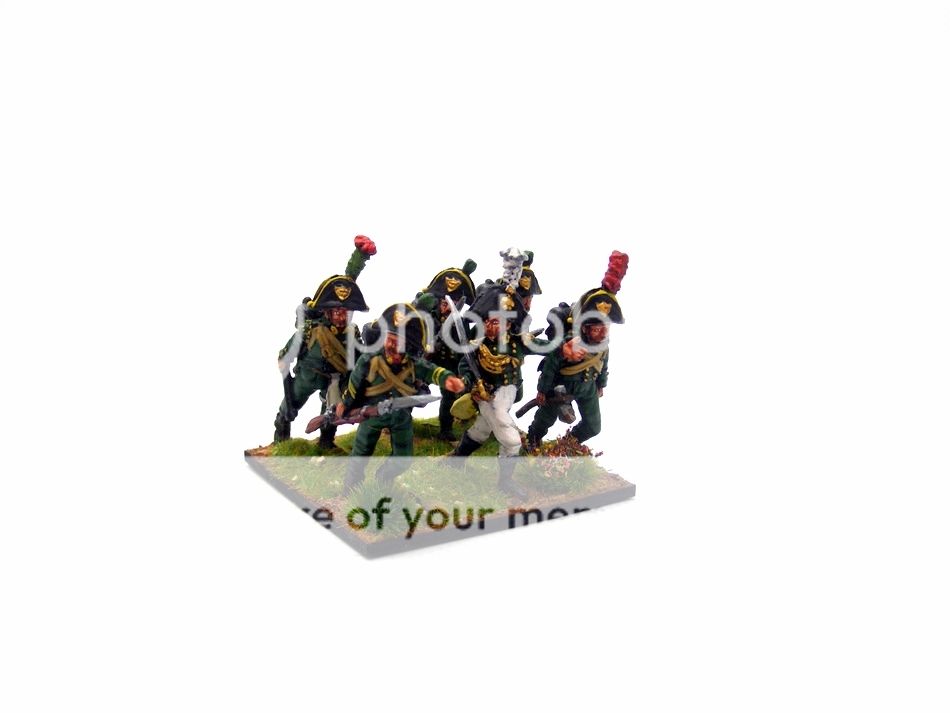



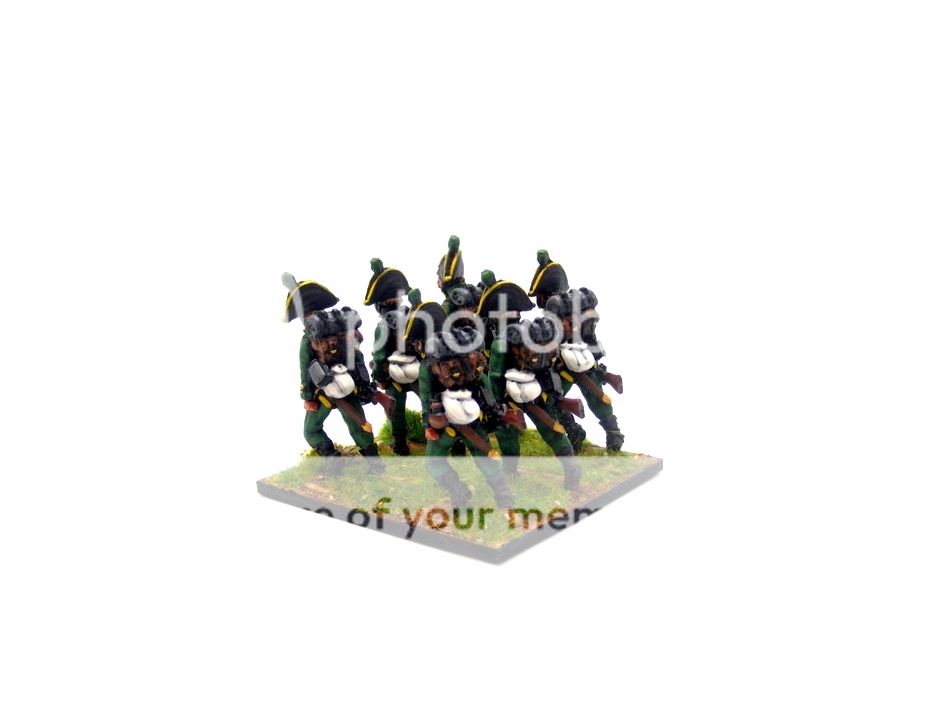


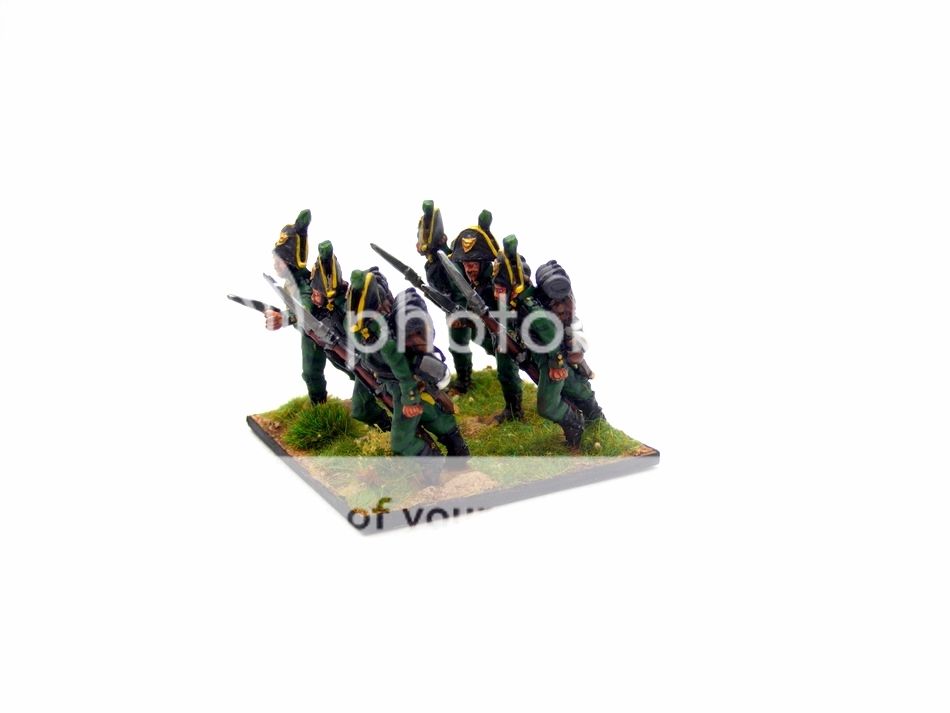

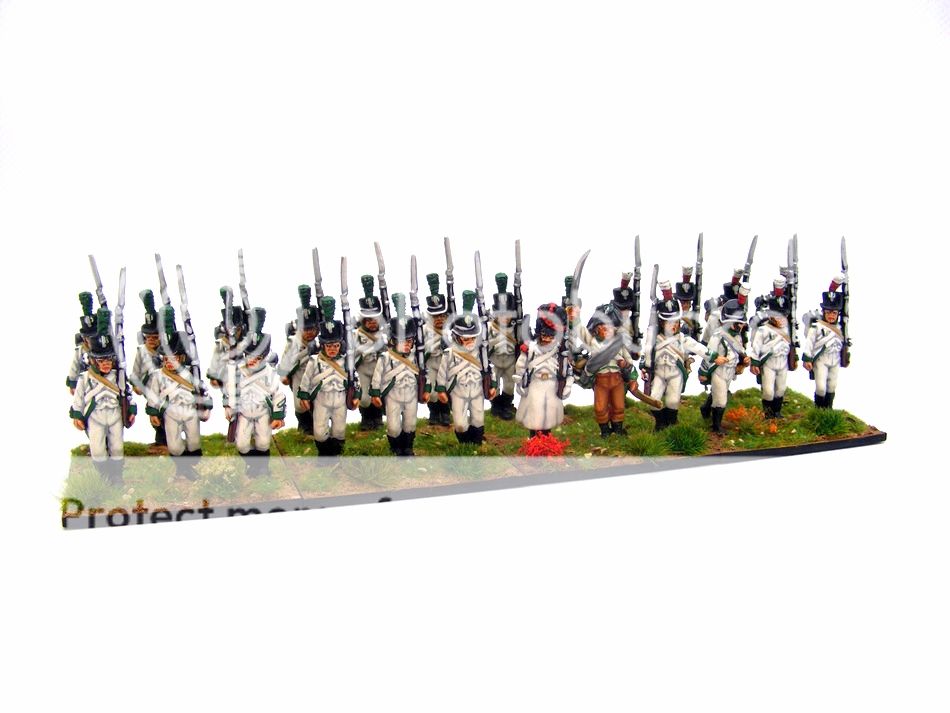

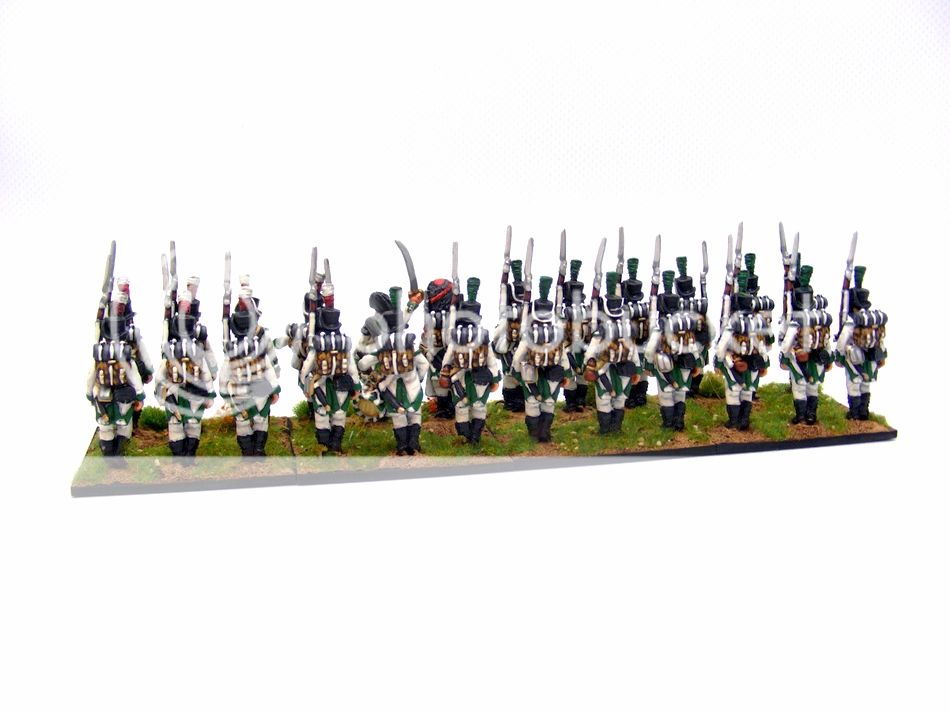
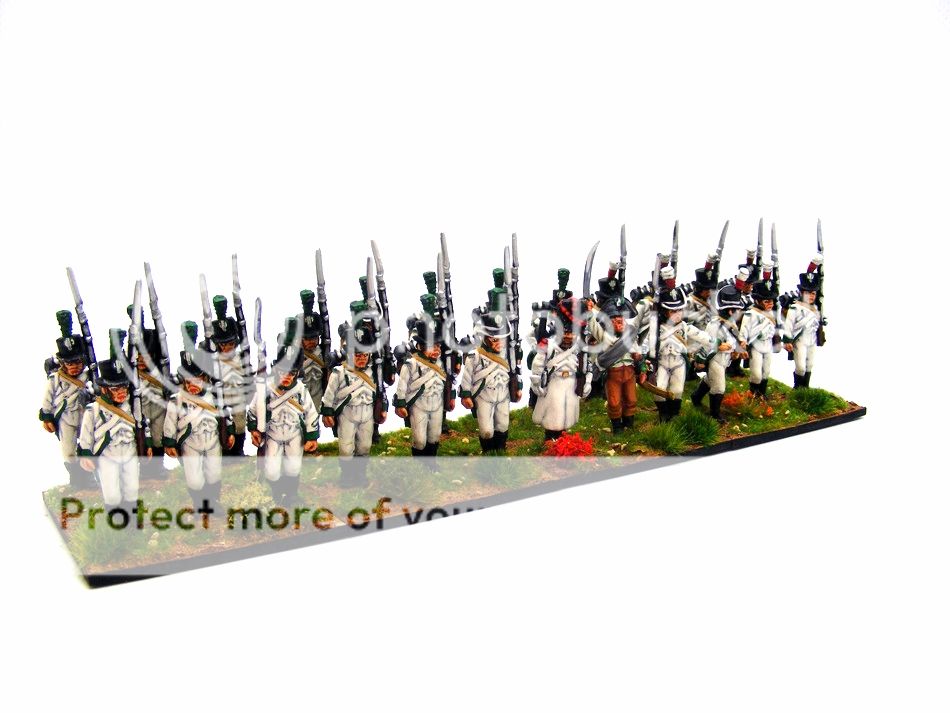




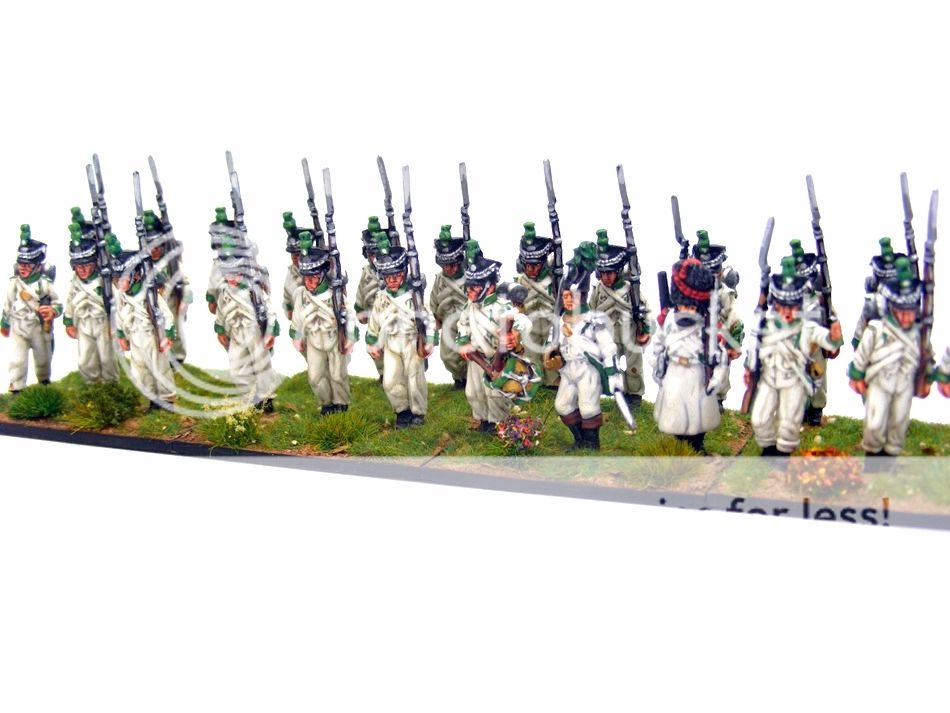

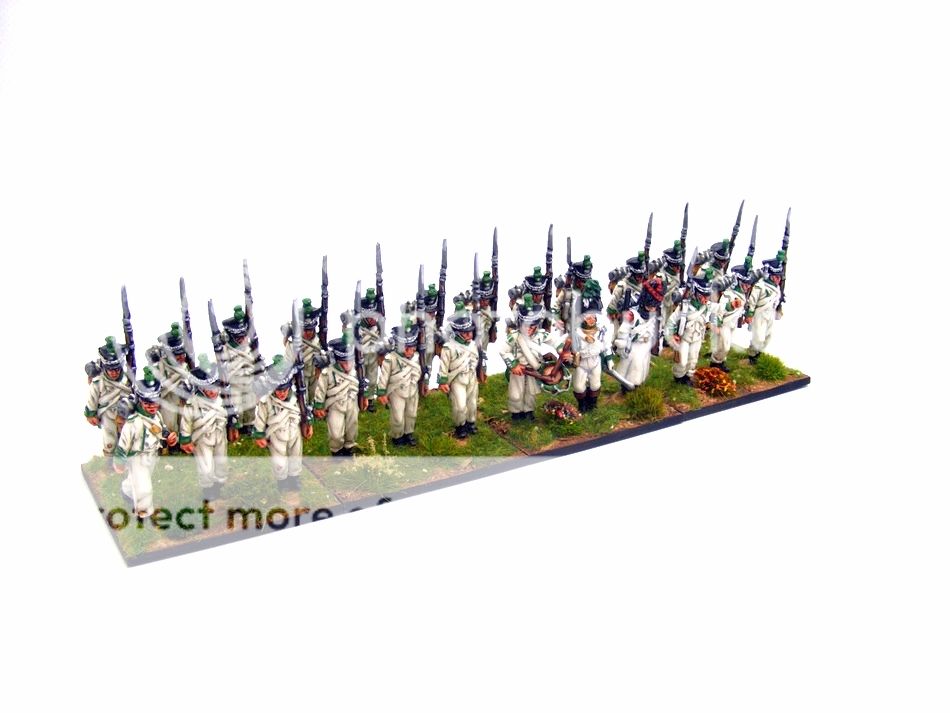
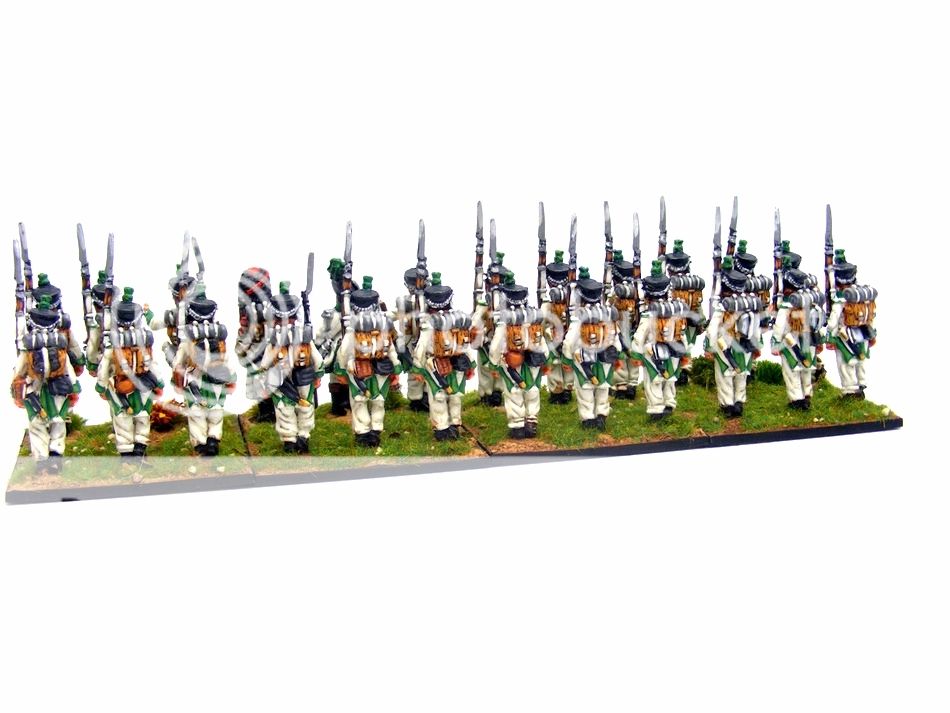


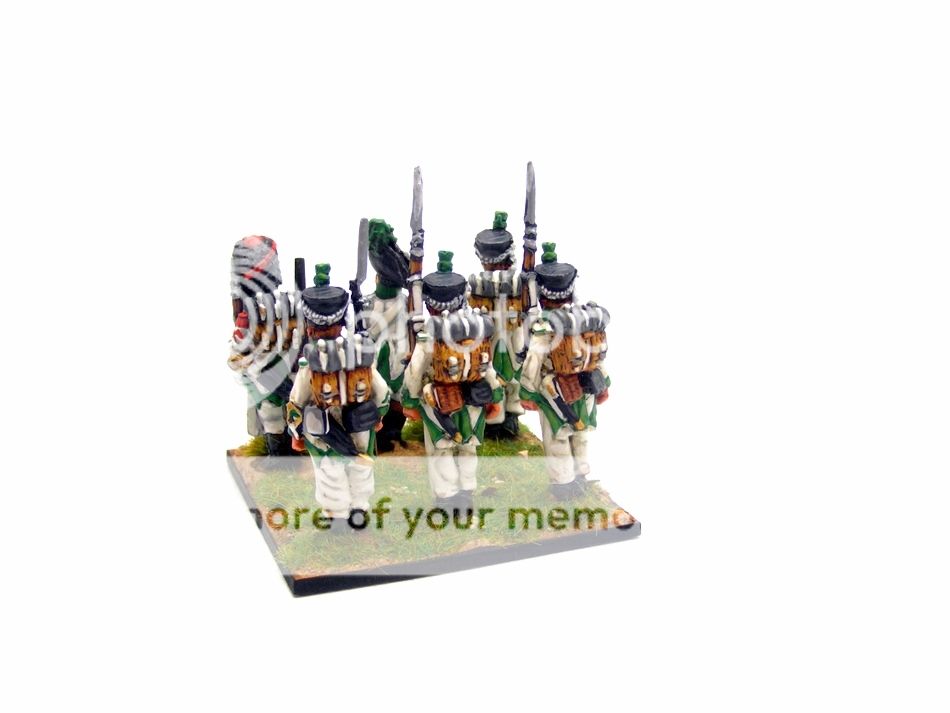



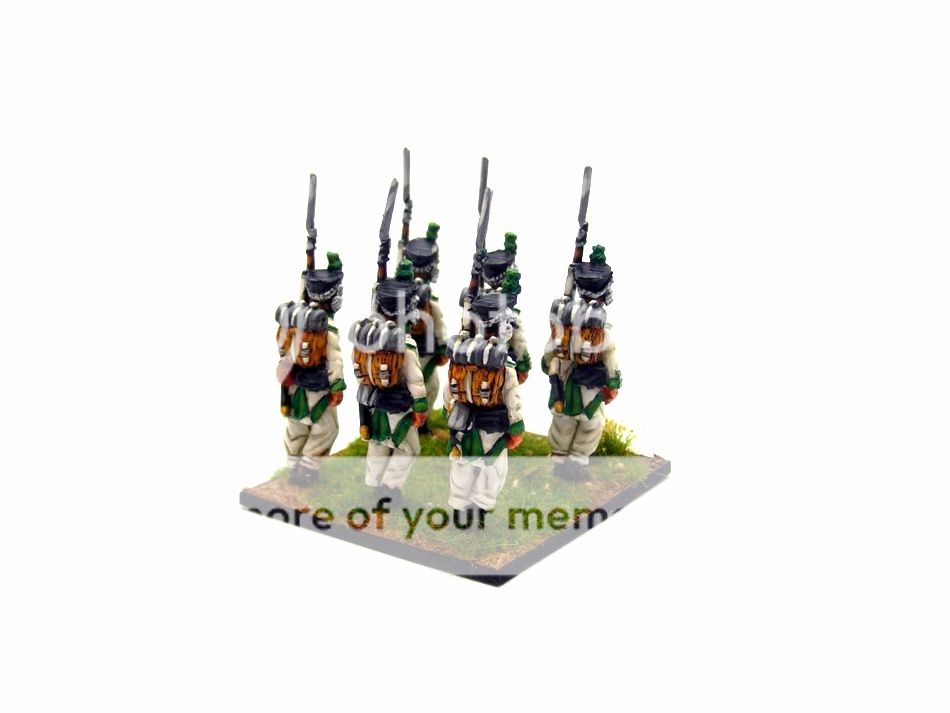
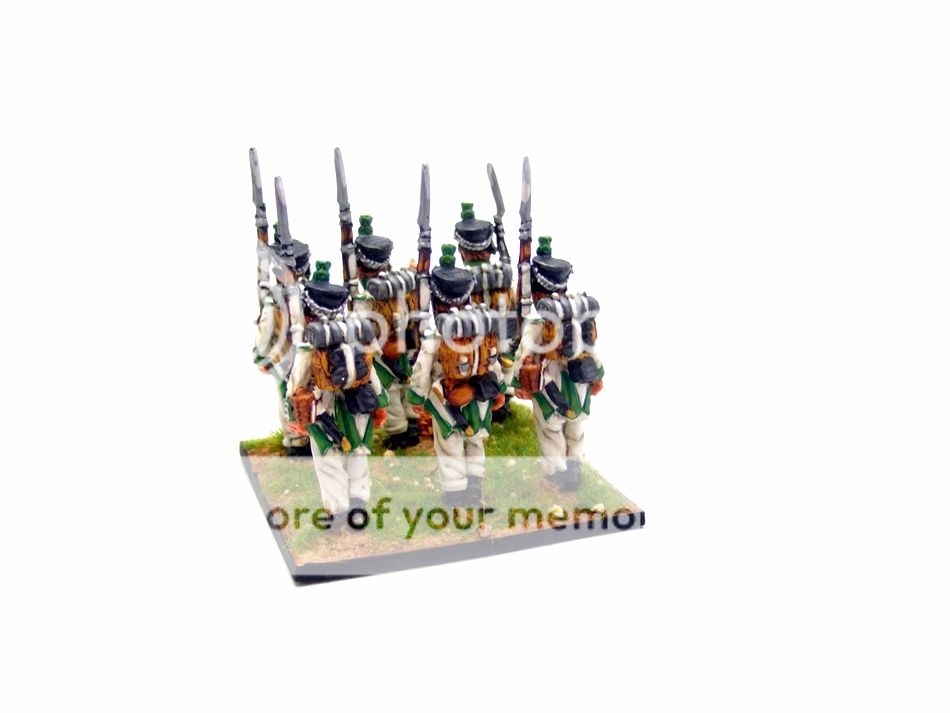




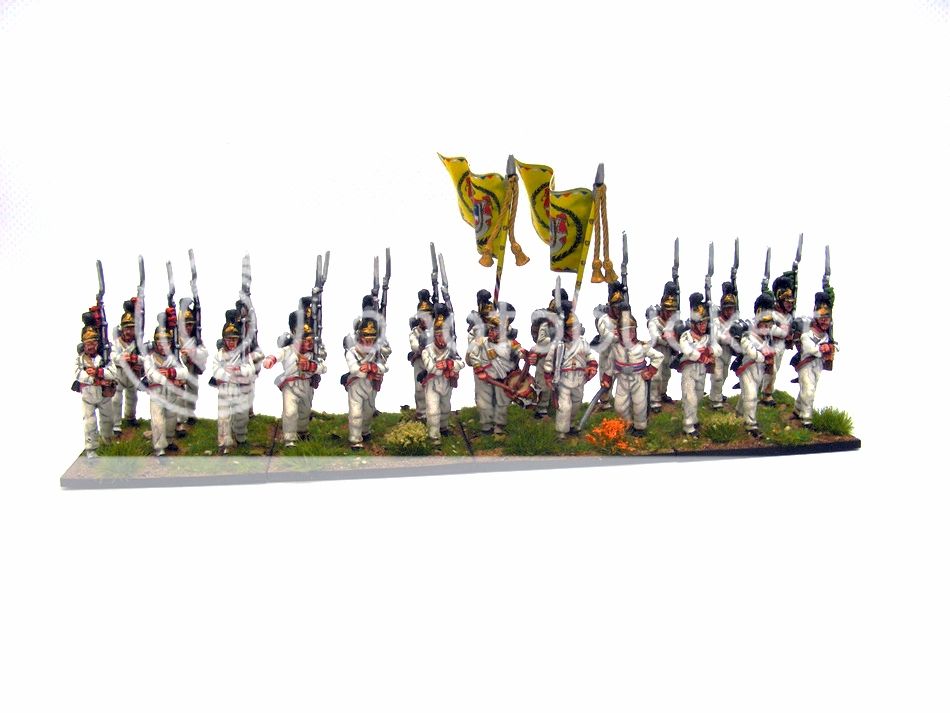
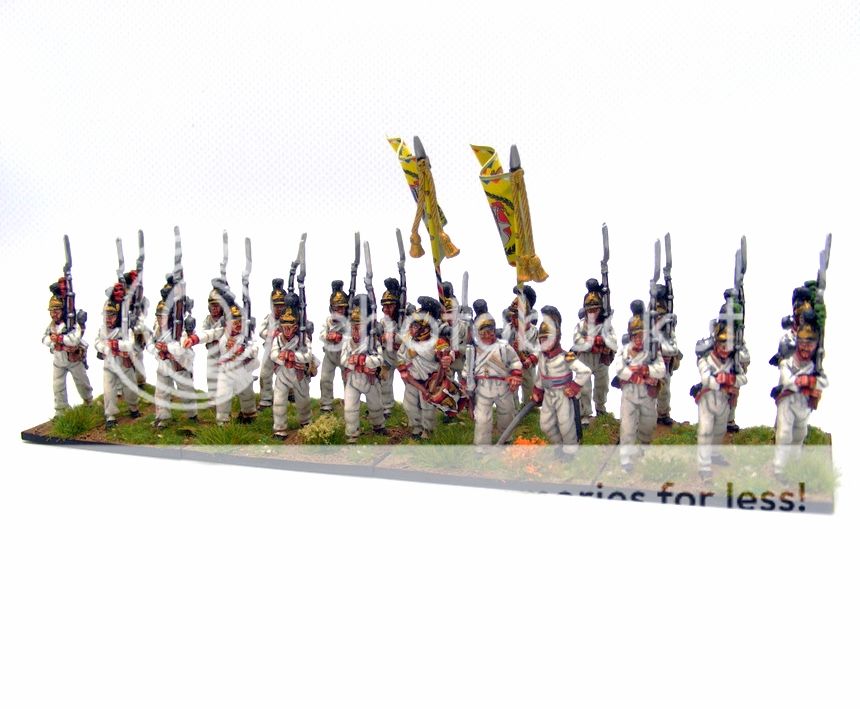

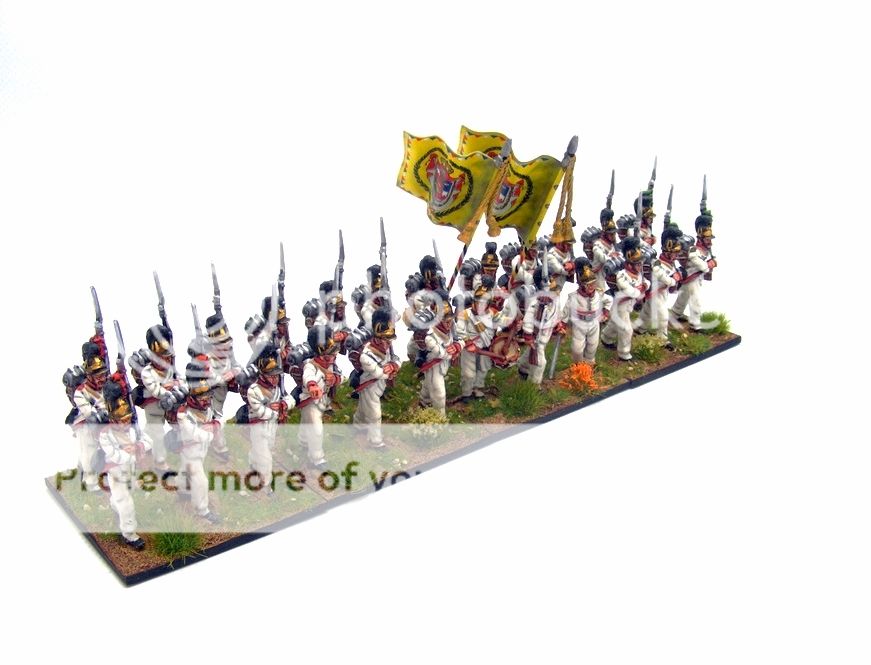
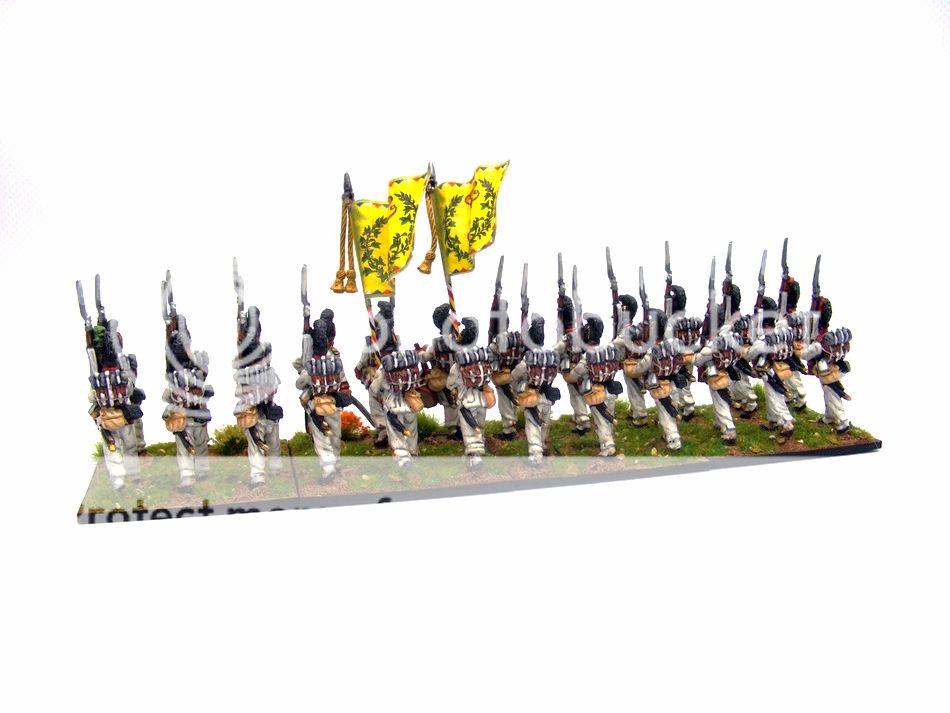
Fantastic
ReplyDeleteAmazing!
ReplyDeleteLove them, beautiful as always!
ReplyDeletewonderful painting!
ReplyDeleteI especially appreciate the historical information! thank you for that!
Thanks, I like to know about the units i'm painting & happy to share the info.keep checking back I will b posting more in due course.
ReplyDeleteVery helpful, thank you! One of the few places where information can be found on the composition of each of the Conf Rhine regiments.
ReplyDelete